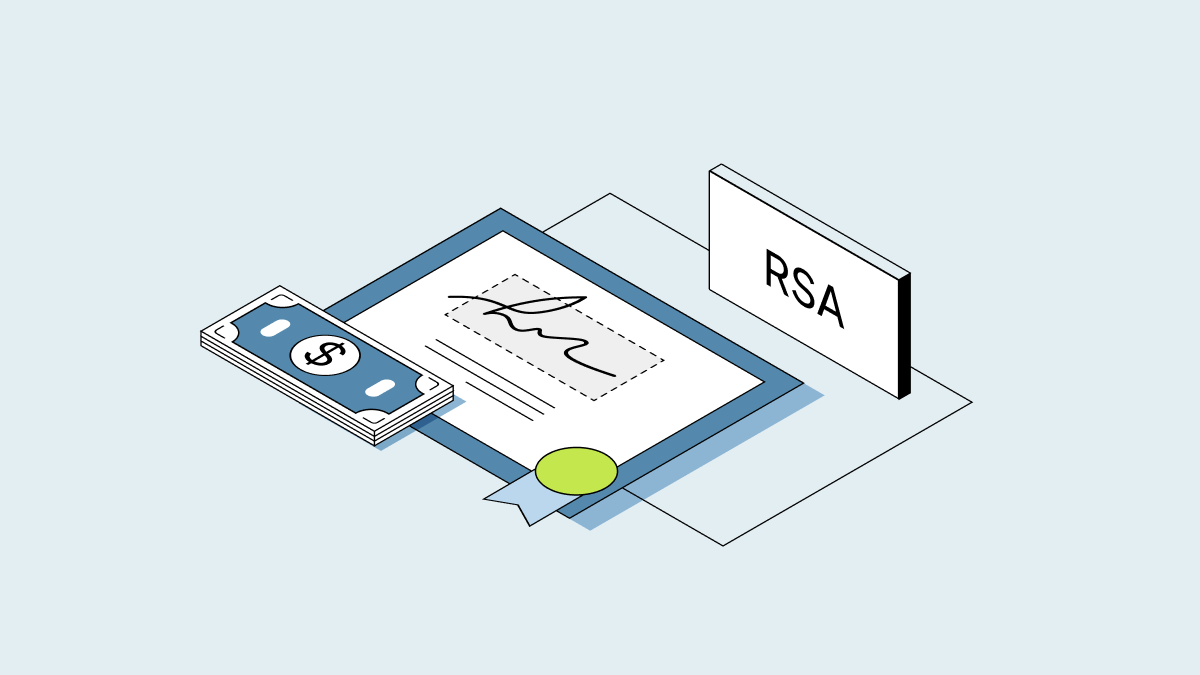For startups, the ultimate sign of success is an exit strategy that gives stockholders a return on their investment. Unfortunately, many startups don’t make it to the finish line.
Whether your company will be one of the lucky few or not, it’s important to know what founders and other stockholders are owed when your company gets acquired or has another type of liquidation event. The rules that govern equity distribution after a company’s exit are known as “liquidation rights and preferences.”
In this article, we’ll cover standard and non-standard terms for the various types of rights and liquidation preferences and how different terms may affect stockholder payouts.
What are liquidation preferences?
When a private company has a liquidity event like getting acquired in an M&A transaction or winding down, shareholders are typically paid out for their equity holdings, such as common and preferred stock.
Among other things, liquidation preferences guarantee that preferred shareholders are paid first after an exit event, thereby optimizing for receiving a minimum return on their invested capital.
How do liquidation preferences work?
Liquidation rights and preferences are typically classified as “standard” or “non-standard.”
-
Standard terms are more common and are friendlier to common stockholders when a company exits.
-
Non-standard terms are less common and are usually more onerous in their treatment of common stockholders when a company exits. Non-standard terms enhance the downside protection, or sometimes even the upside potential, that an investor receives upon a liquidation event.
Your particular company’s rights and preferences may include a mixture of standard and non-standard terms. Who gets paid what (and when) is primarily dictated by the following rights and preferences:
Original issue price
The original issue price (OIP) is the price at which investors purchased preferred shares. The OIP also dictates the investor’s liquidation preference. Under standard terms, the liquidation preference equals the preferred shares’ OIP multiplied by the investor’s outstanding number of preferred shares.
Liquidation Preference = OIP x # of Outstanding Preferred Shares
When a company exits, preferred shareholders are required to be paid out according to their place in the liquidation stack before common shareholders. For example, venture capitalists are typically paid out before employees.
Investors will convert their preferred shares to common shares when it’s more advantageous. For example, let’s imagine a preferred shareholder has a $1 million liquidation preference. They have the option to either receive their total liquidation preference ($1 million) or convert their preferred shares into common shares, receiving a total payout greater than $1 million (based on the exit value of the company). In this example, they would elect to convert.
Liquidation preference
As mentioned earlier, a preferred shareholder’s liquidation preference is typically paid out first as a result of seniority rights. Seniority levels assigned to share classes will determine which share classes get paid out first.
For example, let’s say a Series B company exits via an acquisition. Here’s what might happen under standard and non-standard terms:
|
Investors |
Standard |
Non-standard |
|
Liquidation preferences are paid together on a pro-rata basis |
Paid out first | |
|
Liquidation preferences are paid together on a pro-rata basis |
Paid out second | |
|
Liquidation preferences are paid together on a pro-rata basis |
Paid out last |
Another way to describe standard preferences is that they are “blended”—each preferred shareholder is paid their preference simultaneously regardless of whether they are an earlier or later investor (this is also called a “ pari passu” preference, from a Latin term meaning “equal footing”).
In contrast, non-standard or “stacked” preferences occur when later-stage investors negotiate the ability to be paid out before earlier-stage investors. Investors holding preferred shares with stacked preferences have added protection against downside exit scenarios.
When a company’s exit valuation amounts to less than the combined investment in the company by preferred shareholders, common shareholders receive no payout. For example, if preferred shareholders have $1 million invested in the company, and a company exits for any amount less than $1 million, all proceeds would be paid to preferred shareholders based on their invested capital, and common shareholders would receive no payout.
Liquidation multiplier
An example of a non-standard term is when preferred shareholders have a “liquidation multiplier.” These terms allow investors to receive a “multiple” of their liquidation preference before choosing to convert their preferred shares into common shares.
For example, let’s say an investor owns one million Series A preferred shares with an OIP of $1.00. Under standard terms, their liquidation preference would be $1 million.
However, if the Series A preferred shares have a liquidation multiplier of two times, their liquidation preference would be $2 million.
|
1x multiplier |
Ownership |
Results if company sells for $1M |
Results if company sells for $2M |
|
Preferred shareholders |
1M shares of preferred stock with 1x multiplier |
Receive $1M |
Receive $1M |
|
Common shareholders |
1M shares of common stock |
Receive nothing |
Receive the other $1M |
|
2x multiplier |
Ownership |
Results if company sells for $1M |
Results if company sells for $2M |
|
Preferred shareholders |
1M shares of preferred stock with 2x multiplier |
Receive $1M |
Receive $2M |
|
Common shareholders |
1M shares of common stock |
Receive nothing |
Receive nothing |
Similar to stacked preferences, liquidation multipliers give investors additional protection against a company’s downside exit scenarios. But as shown above, this comes at the expense of other equity holders.
Cumulative dividends
Cumulative dividends are non-standard terms associated with preferred stock. Because startup dividends are typically not paid out regularly, you can think of cumulative dividends as similar to interest that accrues on debt. For preferred shares, dividends are designated as either cumulative or non-cumulative.
-
Cumulative dividends are earned and accrued over time, whether or not it is declared by the board. However, cumulative dividends are typically only payable if and when declared by the board.
-
Non-cumulative dividends are declared and paid out only at the discretion of the board. They do not accrue to shareholders in the way that cumulative dividends do.
Typically, cumulative dividends accrue from the shares’ issue date up until the company’s exit. Any accrued dividends are added to the investor’s liquidation preference upon a company’s exit. Similar to the liquidation multiplier, cumulative dividends provide additional protection to investors in downside scenarios—at the expense of other equity holders.
For example, let’s again assume an investor purchases one million Series A preferred shares with an OIP of $1.00. Let’s also assume the shares have a non-compounding cumulative dividend right of 5%. If the company were to exit in five years, the investor would be owed the liquidation preference of $1 million and $0.25 million of accrued dividends.
Conversion ratio
As stated previously, preferred shareholders will elect to convert their preferred shares into common shares if it would result in a payout greater than the preferred shares’ total liquidation preference, as illustrated below.
|
Investor |
$0.80 value of common share upon exit (if converted) |
$1.20 value of common share upon exit (if converted) |
|
OIP of $1 and 1M preferred shares |
The investor would rather maintain their liquidation preference and receive a payout of $1M |
The investor would rather convert their preferred shares into common shares and receive a payout of $1.2M |
The example above represents a preferred shareholder’s payout assuming a standard conversion ratio of one-to-one. If the value of a common share at exit is higher than the liquidation preference of the investors’ preferred shares, investors would convert their preferred shares into common stock.
Under non-standard terms, the conversion ratio could be something other than one-to-one. For example, let’s take the above scenario (an investor with an OIP of $1 and one million preferred shares) and assume the conversion ratio is adjusted from one-to-one to three-to-one.
In this new scenario, investors would only convert their preferred shares into three million common shares if the payout for a single common share is at least $0.33. In other words, because investors receive triple the amount of common shares upon an exit under the adjusted conversion ratio, they would convert at a lower value of common.
|
1:1 conversion ratio |
Common |
Preferred |
Total |
|
Share count upon liquidation |
1M |
1M |
2M |
|
Ownership percentage |
50% |
50% |
100% |
|
3:1 conversion ratio |
Common |
Preferred |
Total |
|
Share count upon liquidation |
1M |
3M |
4M |
|
Ownership percentage |
25% |
75% |
100% |
A non-standard conversion ratio allows investors to convert preferred shares into common shares at a lower price. As a result, a non-standard conversion ratio allows investors to participate in a greater percentage of a company’s future payout. In the example above, with a one-to-one conversion ratio, investors would participate in 50% of total distributions. However, with a three-to-one conversion ratio, investors would participate in 75% of total distributions.
Participating preferred
Participating preferred stock gives preferred shareholders an economic benefit that allows them to receive additional proceeds—on top of their liquidation preference—before converting their preferred shares into common shares and participating in the remaining proceeds alongside common shareholders.
In a liquidation scenario in which the proceeds are above the amount invested in the company, the participating preferred shareholders receive a return on their original investment (their liquidation preference) and also get to share in any remaining proceeds with the holders of common stock pro-rata on an as-converted basis. “Pro rata” is a Latin term that loosely translates to “in proportion.” It means every shareholder’s distribution is proportional. “As-converted” assumes that all outstanding equity, such as preferred stock, is converted into common stock. This is how a fully diluted cap table is represented.
Essentially, the preferred shareholders with participating preferred stock can “double dip” in favorable exit scenarios.Assuming participation, if an investor commits $1 million, owns 15% of the company, and the company subsequently sells for $2 million, the investor would receive:
-
Their initial investment amount of $1 million (the liquidation preference), plus
-
An additional $150,000 ($1 million x 15%).
Capped participation
When investors are allowed to “double dip,” as illustrated in the example above, it can leave founders and employees feeling shortchanged. As an alternative between participation and non-participation, there is also something called capped participation.
With capped participation rights, investors only participate in the “remaining proceeds” with common stockholders until they reach their cap, which is typically a multiple (e.g., two or three times) of their liquidation preference.
Here are some examples, assuming one million preferred shares with a $1.00 OIP and one million common shares:
|
Company sells for $2M |
Description |
Payout to Preferred |
Payout to Common |
|
Non-participating preferred |
(1) Preferred receive $1M |
$1M |
$1M |
|
Participating preferred |
(1) Preferred receive $1M |
$1.5M |
$0.5M |
|
Capped participating preferred (2x cap) |
(1) Preferred receive $1M |
$1.5M |
$0.5M |
|
Company sells for $3M |
Description |
Payout to preferred |
Payout to Common |
|
Non-participating preferred |
(1) Preferred forego liquidation preference |
$1.5M |
$1.5M |
|
Participating preferred |
(1) Preferred receive $1M |
$2M |
$1M |
|
Capped participating preferred (2x cap) |
(1) Preferred receive $1M |
$2M |
$1M |
|
Company sells for $4M |
Description |
Payout to Preferred |
Payout to Common |
|
Non-participating preferred |
(1) Preferred forego liquidation preference |
$2M |
$2M |
|
Participating preferred |
(1) Preferred receive $1M |
$2.5M |
$1.5M |
|
Capped participating preferred (2x cap) |
(1) Preferred receive $1M |
$2M |
$2M |
What is a term sheet?
As a founder, you may already have a term sheet you’re using to evaluate a round of fundraising. When the time for an initial public offering (IPO) or M&A transaction comes, you’ll also have a term sheet to analyze and negotiate an exit strategy.
A term sheet lays out the basic terms and conditions on which the investor(s) are offering to infuse capital, in exchange for equity in the company.
Once the term sheet is signed, those basic terms and conditions will then be more concretely spelled out in a set of documents, which usually consist of the following:
-
Charter: publicly filed with the state of incorporation that details the type of liquidation preference, dividends, and general voting rights of the preferred and common stock.
-
Stock purchase agreement: the terms on which the investors are buying the equity being issued in the financing.
-
Investor rights agreement: the additional rights that investors who hold certain classes of stock are entitled to, including registration rights and pro rata rights.
-
Right of first refusal (ROFR): an agreement signed by key common stockholders (typically founders and other large stockholders who hold over 1%) and investors that gives the company and the first option to buy stock that those common stockholders are interested in selling to a third party. The ROFR also gives preferred stockholders the second option to buy the stock if the company declines to exercise its right.
-
Voting agreement: an agreement signed by key common stockholders and preferred stockholders that determine board structure and designees, as well as drag-along obligations. Drag-along obligations require all signing stockholders to vote in favor of a sale of the company if approved by certain buckets of stakeholders—usually the board, a majority of the preferred stock and a majority of the common stock—preventing a minority shareholder from holding up an exit).
How to model a future exit scenario
Term sheets set the stage for a successful first funding round and all subsequent rounds of funding, including an exit event. However, the actual provisions in a term sheet can be confusing and bogged down in legalese. Knowing the different options available can help you make the best decision for your company’s future.
Our free exit simulator tool helps you simulate the effects of common term sheet provisions so you can assess your liquidation rights and preferences based on fundraising, equity, and dilution.
Scenario modeling with Carta
Even if an exit event isn’t in your company’s immediate future, you can use Carta’s other scenario modeling tools to automatically calculate the payout to equity holders assuming standard and non-standard terms. Scenario modeling (which is included in Carta’s Growth and Scale plans) is an easy way for companies to ensure they’re in the driver’s seat when the time comes to negotiate terms during a fundraising round.




